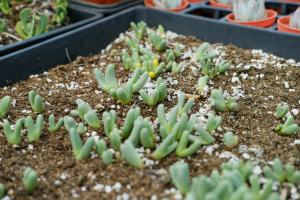How to Plant Water Iris in Pond
Water irises are a beautiful addition to any pond or water garden. Not only do they add color and texture, but they can also help filter the water and provide a habitat for aquatic wildlife. Here's how to plant water iris in your pond:
Step 1: Choose the Right Spot
Water irises prefer to grow in full sun or partial shade. They can grow in water up to 6 inches deep. Choose a spot in your pond where the irises will receive adequate sunlight, but not be subjected to extreme heat. It's also important to ensure that there is enough space for the irises to spread out as they grow.
Step 2: Prepare the Soil and Container
Water irises grow best in soil that is rich in nutrients and has a pH of around 6.5 to 7.5. Before planting, add organic matter such as compost or well-rotted manure to the soil to improve its fertility. You can also mix in some sand to improve drainage.
When planting in a container, choose a pot that is at least 10-12 inches wide and 6-8 inches deep. Line the bottom of the container with rocks or gravel to aid in drainage.
Step 3: Plant the Iris
Place the water iris in the soil or container, making sure that the roots are fully covered. If planting in a container, ensure that the top of the rhizome (the fleshy root-like stem) is no more than an inch below the surface of the soil. If planting directly in the pond, place the iris on the bottom and cover with soil or gravel. Trim the leaves back to about 6-8 inches in length to encourage new growth and prevent the plant from being top-heavy.
Step 4: Maintain the Plant
After planting, the water iris will need some time to establish itself. Keep the soil or container moist, and water daily for the first few weeks until the plant starts to grow. Over time, the plant will spread and may need to be divided. This is best done in spring or fall by carefully removing the rhizome from the soil and separating it into smaller sections. Replant as usual.
Water irises are relatively low-maintenance and can survive in a variety of conditions. However, they will benefit from occasional fertilization and deadheading (removing spent flowers) to encourage new growth and prolong blooming.
Conclusion
Planting water iris in your pond can add beauty and functionality to your water feature. By following these simple steps, you can enjoy a thriving water iris garden for years to come.

 how many times do yo...
how many times do yo... how many planted tre...
how many planted tre... how many pine trees ...
how many pine trees ... how many pecan trees...
how many pecan trees... how many plants comp...
how many plants comp... how many plants can ...
how many plants can ... how many plants and ...
how many plants and ... how many pepper plan...
how many pepper plan...
































